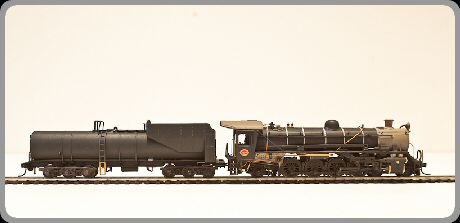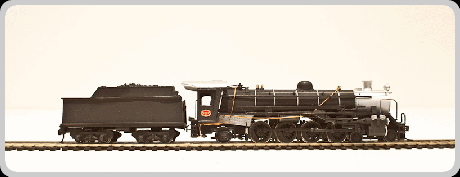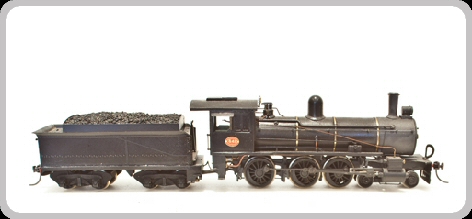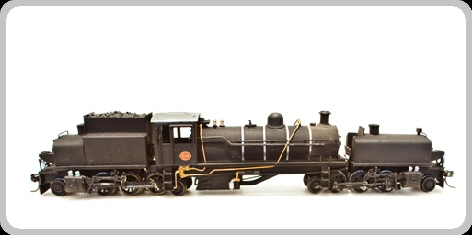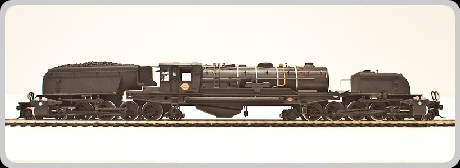SA Steam Models |
|
|
 |
|||||
Accucraft NG 15 Kalahari 2-8-2 live steam locomotive  |
|||||
Accucraft NGG 16 Beyer Garratt 2-6-2 live steam locomotive 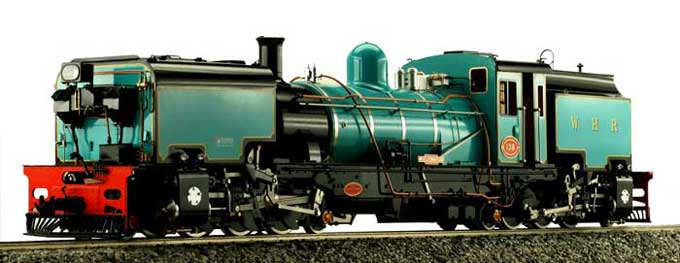 |
|||||
|
|
|||||
 |
|||||
|
Class 19D 4-8-2 with Vanderbilt tender. The final order of fifty of the class were delivered in 1949 by North British Locomotive to the design of then Chief Mechanical Engineer, Dr M.M. Loubser. Although the locomotive was the same as the previous version, they differed by having a large cylindrical tender of the Vanderbilt type running on two three axle bogies. These tenders gave the locomotives a muchincreased range between water stops in arid parts of the country. Like all of the preceding 19 Classes, these locomotives saw service throughout the system. |
|||||
|
Class 19D 4-8-2 with type MR tender The 19D can trace its ancestry all the way back to four 19 Class locos designed by Col. F.R. Collins that were delivered by Berliner Machinenbau in 1928. In 1939 W.A.J.Day decide to upgrade the preceding 19C by replacing the rotary cam poppet valves for Walschaerts valve operation.The 19D deliveries started before the war with 135 delivered by Krupp, Borsig and Skoda. After the war a further 50 were supplied by Robert Stephenson and Hawthorn Limited. These locos were supplied with vacuum brakes. These were very versatile locomotives and were used across the entire SAR network, and were one of the last classes to be withdrawn with the end revenue steam operations on the SAR. |
|||||
|
Class 6J 4-6-0 The 6J can trace its lineage back to the original 6th Class designed by Locomotive Superintendent, M. Stephenson for fast passenger service on the Cape Government Railways. These locos were built by both American and British builders between 18993 and 1904. The 6J was a bar framed locomotive built by Neilson Reid and Co. and entered service in 1902. There were 14 locomotives in the class and were initially used on the Cape Main line. The locomotives used Stephensons valve gear and the last of the Class was withdrawn from service at Bethlehem in 1972. |
|||||
|
Class GCA 2-6-2+2-6-2 The GCA was designed as an improvement on his experimental GC by Colonel Collins. The 33 locomotives of this class were delivered in 1927 by Fried Krupp of Germany. The locomotive had a coal capacity of 7 tons and 2000 gallons of water. They were designed for service on the Natal South Coast, but were eventually found operating on the Underberg and Greytown branches as well as Nelspruit-Graskop branch line. They were all withdrawn from service by 1978. |
|||||
|
Class GMAM Garratt 4-8-2+2-8-4. Between 1954 and 1956, Beyer Peacock, North British Locomotive and Henschel delivered 150 of this class to the South African Railways. The class consisted of the GMAM, for operation on mainlines as denoted by the M at the end. By moving baffles in the coal tender and water tank the capacity could be reduced to 11,6 tons of coal and 1650 gallons of water from 14 tons and 2100 gallons for branch line operation, for track laid with 60lb rail.The locomotives were superheated and used the latest technology available at the time with one piece cast steel frames, roller bearing axle boxes, and Walschaerts valve gear. These locomotives always trailed an auxiliary water tank, to increase the distance between water stops. They saw service on most secondary and branch lines around the country. They were the last Garratt s in service on the SAR, and were still in industrial service up to the end of the 20th Century. |
|||||
|
|
|||||
 |
|||||
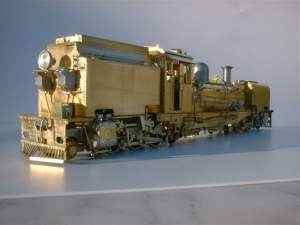 SAR/WHR NGG16 Class 2-6-2+2-6-2T Beyer-Garratt Built by Beyer Peacock in 1956 for South African Railways. Three of the class are now owned by the Welsh Highland Railway for use on its Caernarfon to Porthmadoc route. Includes 2 Faulhaber 2020 coreless motors and all wheels and gears. This kit is available for 0-16.5 and On30 and can also be supplied for On14 (14mm gauge). |
|||||
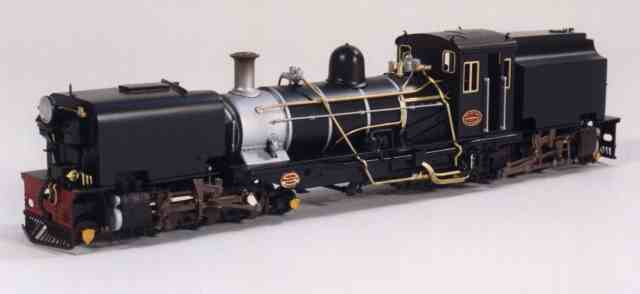 SAR/WHR NGG16 Class 2-6-2+2-6-2T Beyer-Garratt Built by Beyer Peacock in 1956 for South African Railways. Three of the class are now owned by the Welsh Highland Railway for use on its Caernarfon to Porthmadoc route |
|||||
|
|
|||||

